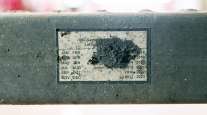Special to Transport Topics
Wrench Time

[Stay on top of transportation news: Get TTNews in your inbox.]
How can fleets get the most out of their technicians? Treat them like surgeons, says one executive.
With technicians in short supply throughout the industry, Gregg Mangione, senior vice president of maintenance at Penske Truck Leasing, said technicians should appear only when it’s time to utilize their highly valuable skills, like a doctor in an operating room. Other staff members can perform prep work tasks like moving and spotting trucks.
“For a long time now, the more we get stressed on having capacity for technicians, at very large locations, you need to treat the technician like a surgeon, and the truck is the patient,” he said.

Mangione
Penske has prioritized reducing technicians’ wasted work and motion. Shops are highly organized, and kept so in part through peer pressure. Everything has its place and is returned to that place so other technicians don’t waste time looking for it. Parts rooms are organized by vehicle maintenance reporting standards coding so parts can be found easily. Tires rest in carousels so they can be stored up rather than out.
Several years ago, technicians began using tablets so they no longer walk back and forth to their computers. Supervisors now have a cart with a printer and monitor where they can drop the tablet into a cradle. Yard movements have been streamlined. For instance, changing where the truck washing occurs eliminated unnecessary movement.
Mangione said Penske also has made numerous investments to minimize diagnostic times. Guided repair systems recommend the three most likely needed repairs based on a complaint and fault code history. Penske has created a diagnostic technician designation and implemented virtual diagnostic assistants with advanced training who can work with stumped technicians and remotely access the diagnostic PC.

Q3 Calibrate Stories
►Investing in Seat Technology
►Frequent Overhead Maintenance: Worth the Trouble?
►Volvo, Bendix Team Up on Safety, Training
►Menig: Technology Solutions for Trailers
►Freeze: Introducing Calibrate
Ryder System, meanwhile, is in the middle of what Keith Fagan, group director of continuous improvement, called a “transformative” effort to maximize “wrench time.”
Lower value activities traditionally performed by technicians — such as staging trucks and retrieving parts — are handled by other team members.
The transformation also has shifted the team’s roles and responsibilities. Instead of sitting in an office, supervisors are stationed in a shop floor control tower where they have a clear view and can spend their time supporting and enabling technicians.
Meanwhile, electronic visual management boards prominently display work flow status and employee performance. Fagan explained that this allows managers to quickly solve problems when they see things that are outside the parameters of those operations.
“It really gives not only the management staff, but also the technicians themselves, a great gauge on how the shop’s performing and how they’re performing individually,” he said.
Fagan added that the changes have been implemented in 100 locations and have increased throughput and pleased the technicians.
In addition, the events of the COVID-19 pandemic kick-started Ryder’s self-service capability so that customers aren’t waiting on a live body. A touchless check-in process lets drivers use a QR code with their phone. Check-in kiosks are available for other drivers. Traffic flow and parking have been optimized, and vehicles are staged based on their status.

Harris
For USA Truck’s Jeff Harris, an efficient shop operation is based on the same lessons taught by mothers and kindergarten teachers: Everything has its place.
Harris, who is vice president of maintenance at the Van Buren, Ark.-based fleet, is implementing the “6S” system associated with the Lean Six Sigma manufacturing approach: sort, set in order, shine, standardize, sustain and safety.
Shops have been mapped with specified colored blocks. Garbage cans, for example, go on the green blocks. Reducing footsteps is one of the system’s main goals. Tire racks divided by type of tire are strategically located. A tire technician is responsible for ensuring they are full. Tools used for a particular repair are grouped on shadow boards that can be rolled to the job.
“If a guy’s got to do a brake job, and he needs to go get a tire shadow board, now he can go straight to the board,” Harris said. “He’s got everything he needs to pull the tires and the wheel assembly off, versus in the past, he would go to one location for a hose, he’d have to go hunt down a gun or a torque wrench, and you don’t have to look for that anymore.”

USA Truck adheres to the adage a place for everything and everthing in its place at the fleet's maintenance shops. (USA Truck)
Likewise, equipment is staged outside in designated areas. Shop status trucks are parked in one location. Assigned and prepped trucks are in another.
“Everything’s got its place, and you can look outside the door, and you can see how many pieces of equipment you’ve got in each stage of the game, and it’s just by looking outside the door,” Harris explained. “It’s an easy visual to see what your workload looks like for the day.”
The system works because the technicians hold each other accountable, he added. If someone fails to put tools where they belong, it slows down the team and affects the tech’s scores.
Efficiency improvements, Harris said, were immediate.
“Your shop organization and your shop cleanliness, it is a direct reflection,” he said. “The quality of your repairs … completely changes when you change the aspect of what your building actually looks like on the inside. It goes hand in hand.”
USA Truck ranks No. 65 on the Transport Topics Top 100 list of the largest for-hire carriers in North America.
Other fleets are also finding ways to improve efficiencies.
Maverick USA, which ranks No. 79 on the for-hire TT100, adopted the Cetaris fleet maintenance software system with a mobile device, allowing technicians to perform data entry at their work stations and bays.
Vice President of Maintenance Mike Jeffress said it has improved throughput because technicians aren’t waiting in line for a monitor or a work station, and they don’t have to bug their supervisor to learn about their next assignment.
Nussbaum Transportation has seen similar success by incorporating tablets in its work process.
James Grier, fleet service manager, said previously three podiums were on the shop floor. He said it was “extremely common” to see several technicians waiting in line there. The tablets include a planner allowing technicians to clock into and out of jobs, and they have reference material helpful for troubleshooting. Among the 20 technicians, the fleet has gained two or three hours a day, he said.

Nussbaum Transportation
Nussbaum also has rearranged its parts distribution process for repairs, said Tony Morthland, director of equipment and facilities. About 40% of the parts going out the window are being delivered by the parts department.
Colby Shaw, corporate service director for truck dealership Kenworth Sales Co., said the 20 service facilities he oversees employ dealer management software for parts requests from the bay so technicians don’t have to go talk to the parts department. In some locations, the department delivers the parts. In new facilities, the parts back counter has been eliminated because transactions occur electronically. Each technician was issued a laptop so they don’t have to walk to a computer to do their paperwork.
“We’ve been doing that for a couple of years now, and it was a night-and-day jump in speed of repairs and keeping the technicians in their bays,” Shaw said. “The amount of wandering around the shop has been greatly reduced by doing that.”
Want more news? Listen to today's daily briefing below or go here for more info:





